Designing the work environment: a reading list
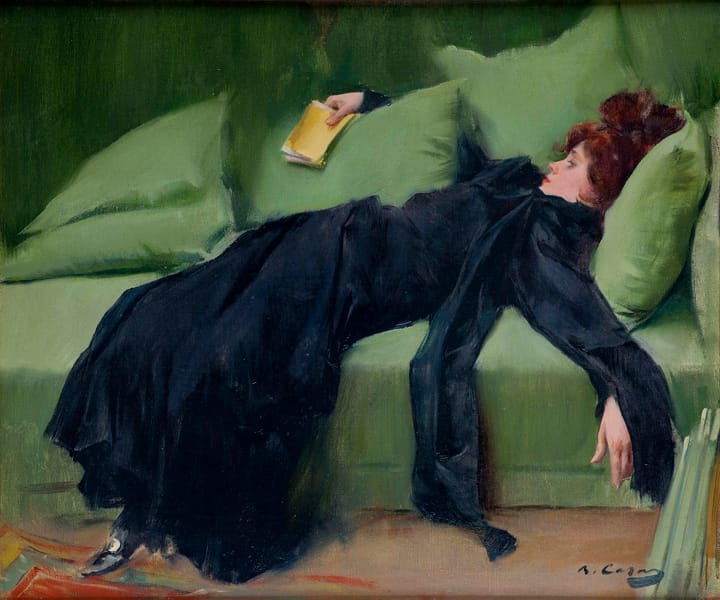
I was a guest on the Service Design Show recently, talking about how creating environments where people can actually do the work is possibly the single biggest thing that we could do to accelerate the transition to a fair, just, net-zero society. The episode is on Apple Podcasts or on Spotify or linked many places from the show's homepage.
Among many other thoughtful questions, the host asked me: If somebody wanted to get good at this work, where should they start? What should they read?
Here are some options.
Brains
The human brain is a fascinating thing, and it is not as smart as it would like you to think it is. These have helped shaped my understanding of its quirks and omissions, of how it works and how it can go wrong.

Thinking, Fast and Slow – Daniel Kahneman (2011)
This is a classic ("seminal" gets said a lot), and for good reason.
Kahneman introduces two modes of thought: System 1 (fast, automatic, unconscious) and System 2 (slow, deliberative, conscious), and explains how, why and when our brain substitutes System 1 thinking for System 2 thinking without telling us.
It covers work on cognitive biases, heuristics, and why people don't actually make the choices that economic theory tells us they ought to.
Since publication, Kahneman has retracted the chapter on behavioural priming due to concerns about the studies' replicability (he talks about this here), but the rest stands.
--
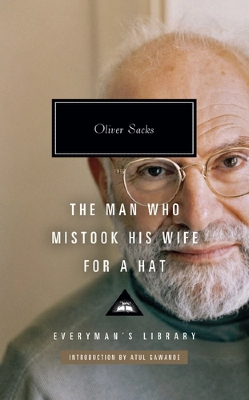
The Man Who Mistook His Wife for a Hat – Oliver Sacks (1985)
Oliver Sacks is both a neurologist and an excellent, engaging, deeply sympathetic writer. This book is a collection of case studies of patients with a wide variety of neurological disorders, which sounds dull, but isn't.
Reading this helped me to understand all that the brain does, magically, under the surface, and how little it takes for things to start going wrong. It's also a great example of how to use storytelling to illuminate a complex and specialised field.
--

The Master and his Emissary – Iain McGilchrist (2019)
This book is a dense, detailed mix of philosophy, psychology and neuroscience, starting with the specialised functions of the two hemispheres of the brain – the left side is detail-oriented, breaking things down into composite parts in order to analyse them and understand their potential benefit to the individual; the right side is holistic, socially focused and integrative, interested in what the sum of these parts means – and linking this to the societal consequences of our increasing preference for the left-brain's way of seeing the world.
There is a follow-up – The Matter With Things – which I haven't read yet, largely because it comes in two volumes and weighs three and a half kilos. There's a thoughtful and thorough summary of Iain McGilchrist's worldview through these three books on Perspectiva here, if you'd like a gentler start.
--

Hidden Brain podcast – Shankar Vedantam (started 2015, still going)
"Every episode of Hidden Brain aims to help people get to know themselves a little better, to think of their inner worlds with less judgment and more curiosity."
Each episode, Vedantam interviews a scientist, researcher or thinker about a particular aspect of human behaviour, digging into the underlying psychology and brain science.
Occasionally, the podcast runs special series on topics like relationships, finding meaning or living life well.
--
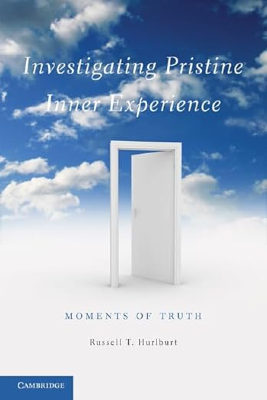
Investigating Pristine Inner Experience – Russell Hurlburt (2012)
I was assigned Sarah Akhter's chapter on Unsymbolized Thinking as part of a course years ago, and it was my first introduction to just how different everybody's internal experience is.
Since then, I've learned that I have aphantasia (I can't see pictures inside my head). "Think of a horse. What can you see?" is still one of my favourite questions to ask at parties. People are almost always surprised (and sometimes horrified) at how different the answers are.
People
These books are less brain-science-y, more embodied, more about how our experiences affect us and how that can be undone or overcome.

The Body Keeps the Score – Bessel van der Kolk (2015)
Bessel van der Kolk is a researcher and practicing trauma therapist, and this book brings together case studies and theory to explore the (often unconscious) impacts of trauma.
More broadly, this book helped me to understand how much of our conscious experience is shaped by and in conversation with our embodied selves, and - again - how little we are aware of that.
--
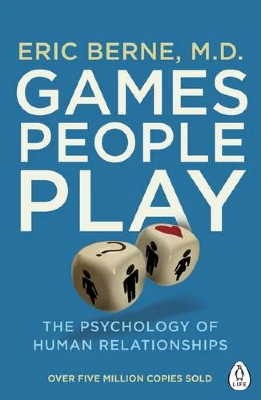
Games People Play – Eric Berne (1964)
This book introduced me to transactional analysis, the idea that saying what we really mean is often impossible, and so we revert to patterned 'games' to avoid any real vulnerability or intimacy. You're probably familiar with the problem-solving game where you come up with a bunch of solutions, and the person with the problem explains why each of them is impossible? That's in here.
It's also a useful introduction to the Parent / Child / Adult dynamic, allowing you to spot which role you're playing in a given interaction, and how that might need to change to get better results.
--
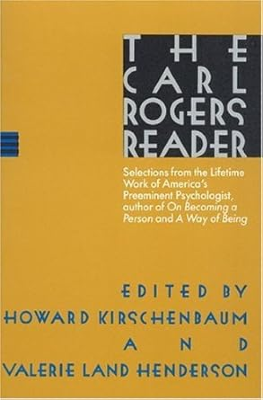
The Carl Rogers Reader – Carl Rogers (1989)
Carl Rogers popularised the therapeutic concept of unconditional positive regard, the basic acceptance and support of a person regardless of what they say.
Several years ago, my friend sent me his 1964 paper on the process by which we learn to put on a mask that doesn't reflect who we really are, the process by which we can undo that (this is where unconditional positive regard comes in), and the results of doing so. The paper is on the Wayback Machine here, or included as a chapter in the Carl Rogers Reader.
This paper, along with many conversations with the same friend about person-centred therapy, taught me a lot: the value of gentle, non-judgmental interest in allowing people to say what they really mean; the reasons it is so difficult to admit when we are saying two things that can't both be true; the underlying pro-social, considerate values that we all have hidden underneath whatever we have been taught.
--
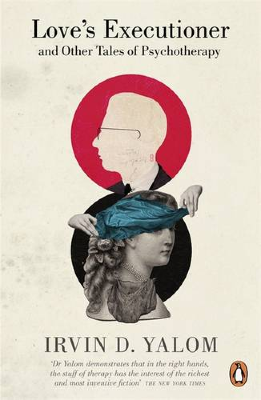
Love's Executioner – Irvin D. Yalom (1989)
Here, Yalom, a practicing psychiatrist, gives ten case studies of different patients.
Like The Man Who Mistook His Wife for a Hat and The Body Keeps The Score, this book offers very human, compelling portrayals of the hidden life of the mind. It shows the universal anxieties underneath all sorts of challenging behaviours: our need for love, our fear of death or isolation.
Something else Eric told us, that I have carried with me: "nobody's trying to be an asshole."
Relationships and other interpersonal encounters
Now that you understand the brain and the many ways that our conscious experience does not reflect what we actually want, think or fear, you can start to put that knowledge to use in group contexts. Good luck!
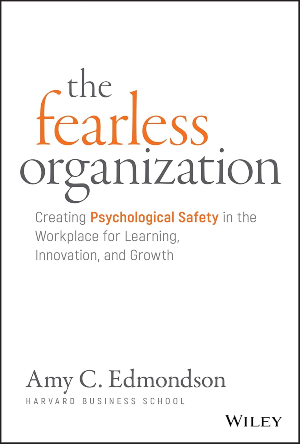
The Fearless Organisation – Amy Edmondson (2018)
Of course we're starting with Amy Edmondson here, Grand Mother of the theory of psychological safety. If you're not familiar with it, it's the finding that what predicts team success most strongly is how safe its members feel to fail in front of one another.
I should admit: I haven't actually read the book. I've read her original (1999) paper, Psychological Safety and Learning Behavior in Work Teams, because it's shorter. You can do that too, if you like.
I first came across Edmondson's work through Google's Project Aristotle, a research project which came to the same conclusion. There are a bunch of resources on their re:Work site, including the other predictors of team success and suggested things you can do to foster them.
--

Together: The Rituals, Pleasures and Politics of Cooperation – Richard Sennett (2013)
I've loved Richard Sennett's work since I read The Craftsman at university. He writes wonderfully about what it is like being a human in this, particular world, and how we might move towards a slightly better version.
This is the second of his books in that series, about homo faber, human as maker. Sennett argues that cooperation is becoming more important as we are getting worse at it, as the institutions and societal structures that used to house it break down. He makes the case that you can't just put people into a room and hope they get on with it; that cooperation is a skill which needs to be learned like any other.
--
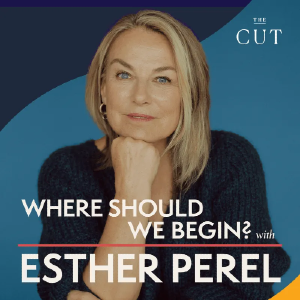
Where Should We Begin and How's Work – Esther Perel (started 2017, still going)
Proof, if you need it, that all that therapy stuff in the books up top works. Where Should We Begin and its sister podcast, How's Work, follow real couples (and colleagues) in conversation with Perel as she helps them uncover the problems they're really dealing with, and find ways to actually understand and accept each other. Some of the episodes seem like outright witchcraft.
--

Design, When Everybody Designs – Ezio Manzini (2015)
This one's about boundaries. Manzini situates design work (read: any attempt to make the world a bit better) in its true social context (that being: one in which truly everyone is doing at least some of that work).
A point he makes is that you can't choose to exclude people from the design process, the process by which a thing comes into being and is used and changes. Or, rather, you can, but only for as long as you have a Design Project and someone guarding it to make sure nobody gets in, and then after that it all goes to pot.
A useful reminder for the inevitable question: do we really need to involve compliance, or clinical safety, or the voting public, in the early stages of a project? (yes)
Society
What is work? Why do we think about it the way we do? What are the systems that influence the way we interact with our work and our colleagues, that inform our expectations and goals and sacrifices?
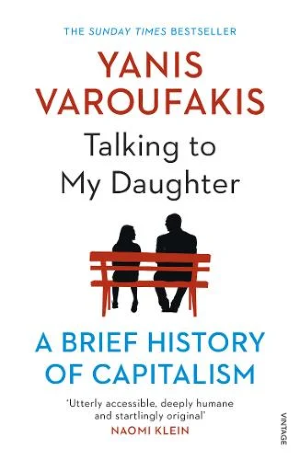
Talking to My Daughter: A Brief History of Capitalism – Yanis Varoufakis (2019)
I went to art school. I had a wonderful time; I learned a lot about things like 'quality of line' and the value of practice. But I did get to my thirties without a particularly solid grounding in things like economics or political science.
If you're in a similar boat, this is a great introduction to the ideas and forces that have shaped the way our economy works now, and to some of the challenges around changing it. Varoufakis is an economist (and former Finance Minister of Greece), and this book is written as an explanation for his young daughter. It's clear, accessible, and doesn't assume you already understand what primitive accumulation is.
A bonus, for the very keen: I love Yale's Open Courses, published before MOOCs were even really a thing. I'm three sessions into this one, and it's a great follow-on from the book above. Turns out Adam Smith is ... actually quite funny?
(A hint: do the reading, don't just watch the lectures; it really does help).
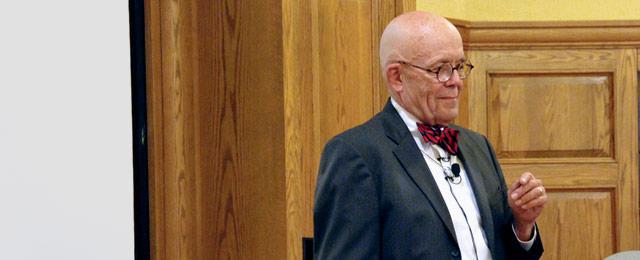
--

Caliban and the Witch: Women, the body and Primitive Accumulation – Silvia Federici (2021)
I had to look up Primitive Accumulation*, and then I had to look up some of the terms that were used in the definition. I recommend this book a lot, but with the caveat: it is dense.
What's interesting in it, in this context, is the thinking around what the transition to capitalism did to people's relationships with their time and their bodies. A lot of the things that today seem fixed and immutable - time in saleable units, set working patterns, demographics - were, in fact, introduced; they can change.
There's also a lot about the state's relationship with the individual body, particularly around reproduction, and how this links to the witch trials.
* "Primitive" as in "Original". It's a Marxist term for the process of accumulating capital by taking it from other people (as land, resources and labour).
--

The Foucault Reader – Michel Foucault (ed. Paul Rabinow) (2020)
Federici draws heavily on Foucault's work in Caliban and the Witch. Foucault describes himself as a 'genealogist of history', placing social changes in their historical lineage, finding their preconditions and effects, drawing connections between them.
He's interested in knowledge, power, surveillance, bodies, madness, sexuality; tracing the ways in which states and powerful institutions warp and shift these concepts.
For our purposes, you can skip the chapters What Is Enlightenment and What Is An Author (I read too much Barthes at uni, and now I'm allergic to discussions of authorship).
--
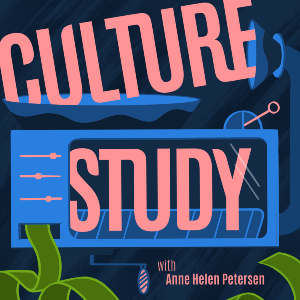
Culture Study – Anne Helen Petersen (since 2016)
The only newsletter I subscribe to. Anne Helen Petersen thinks widely, generously and interestingly about what it's like to be a person in this world.
She's the author of Can't Even: How Millennials Became the Burnout Generation, a book expanding on the ideas in
this Buzzfeed piece from a few years ago.
She has a background in academia, and her articles on gender, parenting, building community, and work are based heavily on her own interviews and conversations. She's also where I got the idea of sociology as de-gaslighting from: yes, things are shit; no, it's not your fault you're burned out and can't afford a house, whatever you're being told about buying too many avocados.
Systems
The next level up in the scale. Everything is connected to everything else; you can't change one part without affecting other parts; you won't know in advance what the impact will be.
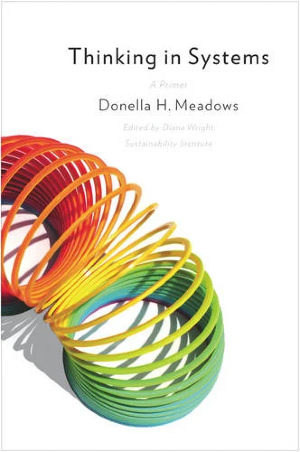
Thinking in Systems – Donella Meadows (2008)
I read this book so long ago, and I use the thinking in it so often, that I had forgotten having read it; the theory became something I "just knew". But no: I remember the slinky, and the elephant. If you want a primer into systems thinking, thorough and detailed and with illustrative examples, this is it.
I refer back to often, and share often, Meadows' article leverage points: places to intervene in a system. How can I cause the most impact, given the levers that are available to me?
--
There's a quote in the introduction to Meadows' book:
Managers are not confronted with problems that are independent of each other, but with dynamic situations that consist of complex systems of changing problems that interact with each other. I call such situations messes. . . . Managers do not solve problems, they manage messes. —Russell Ackoff, operations theorist
Mary Uhl-Bien, then, writes about the messes. She applies systems thinking to organisations (because organisations are complex, adaptive systems; you poke one bit and who knows what happens), with a particular emphasis on how to effectively lead through complexity. If you've heard of adaptive space or boundary spanners, this is where the theory lives. The video below (the video is also linked here) is a great introduction to her work.
Useful skills
Not all of the work I do is centred on understanding people. Some of it involves helping people understand, and care, and figure out what to do.
How to visualise stuff so people will understand it

Envisioning Information – Edward Tufte (1990)
This is a graphic design bible. A very solid guide to everything you need to know about how to draw (and write) stuff on paper (or a screen) so that someone can, at a glance, understand the point you're trying to make.
If you'd rather just look at nice examples of this being done, I can recommend Information is Beautiful by David McCandless as a companion piece.
--
How to tell stories so people will care
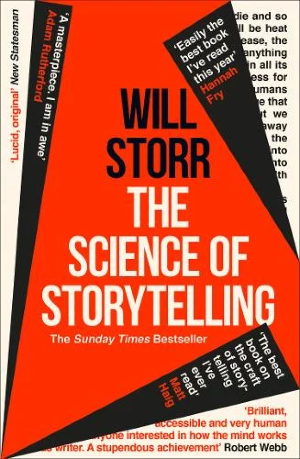
The Science of Storytelling: Why Stories Make Us Human, and How to Tell Them Better – Will Storr (2020)
A friend (hi, Helen!) lent this to me last year, and I often find myself reaching for the things I learaned in it. Storr dives into the neuroscience of storytelling, citing studies and giving good (and bad!) examples. What makes us care about a story? When will we keep reading, and when will we give up, uninterested? Which stakes are the right stakes?
The thesis of the book is that storytelling is inextricably linked to the things that make us human (sociality, curiosity about other humans and about social situations, the possibility of change and redemption, the desire to see wrongdoers punished), and Storr shows how to apply that knowledge to create compelling stories.
--
How to have useful ideas

Seeing What Others Don't – Gary Klein (2017)
Klein tells the stories of scientific breakthroughs and other insights and looks at what they have in common. The very short version is: add to your 'creative compost' often, so you have the ability to add unrelated ideas abd theories to each other and see what happens. Sleep, rest, go for walks, so your brain can do the interesting things it does when you're not looking at it tapping your watch.
Justification to read widely, to be interested in things, to stop working and wander around occasionally.
With thanks to Andy Fitzgerald's Cognitive Sciences Reading List for Designers, which I came across a decade ago and which reassured me it was okay to read books about linguistics for fun.
Bookshop.org links are affiliate links; if you choose to buy through them, thank you. If you prefer not to, that's fine too.
For a while, inspired by Ross Gay's wonderful Book of Delights, I've been noticing my own delights and writing them down. I shared a few with some friends recently and they said such lovely things, I thought I'd start including one here.
*
May
THERE IS ALWAYS A VOID
I cheated at climbing last night. There seemed to be a way up the rock that looked fun and did not require me to be five inches taller than I am; only after I had made the first move – one foot bunched up uselessly around my hip, the other dangling over the void (there is always a void) – I realised that the only handhold available was a small nubbin, barely protruding and just large enough for part of a single finger. So I grabbed the quickdraw that was already attached to the rock – I think there is a reason, other than vanity, that you are not supposed to do this, possibly related to physics, but I never remember physics-related reasons and so I try not to do it anyway, just in case – and used that to haul myself up.
As I was standing on the ledge at the top of the route feeling disappointed in myself, I looked over my shoulder towards the open view out of the quarry and across the fields, and what a sky there was there. The sun was setting, or preparing to set, and the light was taking on that silvery evening colour, and the little wispy clouds were stretching themselves along the top of the crag opposite. And also, the mosquitos were coming out. (This is not part of the delight, but I include it here for completeness).
Later, on the drive home, I looked out at the river as we crossed the bridge – a famous and very handsome bridge, but a river that for half its life is mud flats, in a palette of resolute brown – only now, the sky reflected on the surface of the water, the tide in just enough for the river to curve gently and enticingly, everything around it silhouetted in the twilight.
And later again, bringing in the seedlings for the night: just the tiniest stripe of pink on the horizon, visible in the gap between the houses.
It is May, and the sun does not set until nine, and so all of this is ours to enjoy.
*
A BICYCLE
A bicycle, and a road that slopes gently downhill: I wish this joy for us all.
